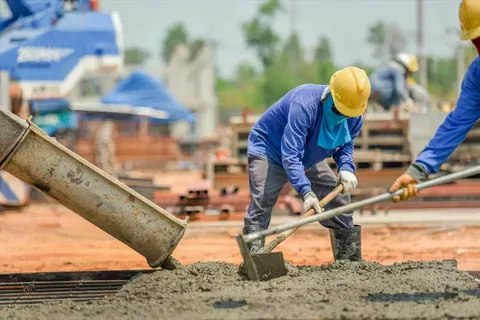Old tractors hold a special place in the world of agriculture. These machines, built with toughness and simplicity, continue to serve farmers, collectors, and hobbyists even decades after their production. While modern tractors come with advanced technology, old tractors remain symbols of reliability, mechanical strength, and heritage. Their value extends beyond farm work—they represent a history of rural development, engineering progress, and the enduring bond between farmers and their machines. In this article, we explore why old tractors still matter, what makes them unique, and how they continue to shape agriculture and rural culture today.
The Legacy of Old Tractors
Old tractors were built in a time when machinery was designed to last. Manufacturers focused on creating machines that could survive harsh terrains, tough weather, and years of intensive farming. Many of these tractors were made with high-quality steel, simple engines, and minimal electronic components. This made them not only sturdy but also easy to repair, even in remote villages where access to modern tools or spare parts was limited.
Farmers trusted these tractors because they were predictable. Whether ploughing fields or transporting loads, old tractors delivered consistent performance. They often became part of the family heritage, passed down through generations like a prized possession. Today, their historical and emotional value makes them even more meaningful.
Why Old Tractors Still Have a Market
In many rural areas, old tractors remain in high demand. Their affordability is a major factor—farmers who cannot invest in expensive modern machinery choose old tractors for their basic but reliable functionality. Spare parts for popular models like Ford 3600, Massey Ferguson 135, Mahindra 475, or Swaraj 735 are still widely available, and most local mechanics are fully capable of repairing them.
Another reason is fuel efficiency. Many old tractors were designed with engines that ran smoothly on lower-grade fuel. They consume less diesel compared to some heavy modern tractors, making them cost-effective for small-scale farmers. Additionally, their lightweight structure reduces soil compaction, a factor that helps maintain soil health and crop productivity.
Collectors also contribute to the market for old tractors. Vintage tractor enthusiasts often buy, restore, and showcase them at rural fairs, exhibitions, and tractor parades. Restored tractors, polished to their original look, attract admiration and help preserve agricultural history.
Key Features That Make Old Tractors Stand Out
- Simple Mechanical Design
Old tractors are known for their straightforward engineering. Without complex sensors or electronic control units, these machines depend mainly on mechanical components. This makes them extremely easy to troubleshoot and repair. A farmer with basic mechanical knowledge can often diagnose and fix issues without needing advanced equipment.
- Durability and Long Service Life
One of the biggest strengths of old tractors is their long lifespan. It is common to find machines that are 30–60 years old and still functioning effectively on farms. Their engines and gearboxes were designed for endurance, and many of them continue to outlast newer tractors.
- Lower Maintenance Costs
Maintenance is affordable because parts are inexpensive and readily available. Old tractors do not require high-tech servicing, and any village mechanic can work on them. This accessibility keeps long-term costs low and makes them appealing to budget-conscious farmers.
- Strong Pulling Power
Even with lower horsepower, old tractors offer strong torque and steady pulling capacity. They perform well in tasks such as ploughing, tilling, and transporting loads. Their stable power output makes them suitable for rough terrains and traditional farming methods.
- Ease of Modification
Old tractors can be easily customized. Farmers often modify them for water pumping, hauling construction materials, powering threshers, or even using them in tractor rallies. Their adaptable design adds to their long-lasting relevance.
How Old Tractors Support Modern Agriculture
While modern tractors excel in precision farming and high-speed operations, old tractors fill an important gap in rural agricultural needs. Small and marginal farmers, who form a major part of the agricultural community, often rely on these machines for essential fieldwork. Old tractors handle routine tasks like ploughing, seeding, and transportation without requiring major investments.
In regions where farming is still dependent on traditional methods, old tractors provide a perfect balance between cost and utility. They are particularly useful for narrow fields, rough rural tracks, and hilly terrain where large modern tractors struggle to maneuver.
Old tractors also contribute to sustainable farming. Their minimal electronics and mechanical engines reduce the need for frequent replacements, indirectly lowering waste generation. A well-maintained old tractor can operate for decades, reducing the environmental impact of manufacturing new machinery.
The Emotional and Cultural Value of Old Tractors
Beyond functionality, old tractors have a nostalgic value. Many farmers grow up around these machines, learning to drive them long before they operated any vehicle on the road. These tractors become symbols of their family’s hard work and agricultural journey.
In many villages, you will find farmers proudly preserving their vintage tractors as part of their heritage. Festivals, tractor rallies, and agricultural exhibitions often showcase these machines as cultural icons. They remind people of the era when farming relied heavily on human skill, mechanical strength, and community support.
Restoration: Keeping Old Tractors Alive
Restoring old tractors has become a growing hobby among enthusiasts. Restoration involves repairing the engine, repainting the body, replacing worn-out parts, and bringing the tractor back to its original glory. Many refurbished tractors look brand new and perform impressively well.
Restoration has also created a new business opportunity—selling restored tractors to collectors, small farmers, and agricultural institutions. These machines often hold both historical and practical value.
Conclusion: The Timeless Appeal of Old Tractors
Old tractor are more than just agricultural machines—they are symbols of strength, simplicity, and the hardworking spirit of rural life. Their durability, easy maintenance, and emotional significance keep them alive in the hearts of farmers and collectors. As agriculture evolves with modern technology, old tractors continue to remind us of the foundations on which farming was built. Their legacy endures, proving that even in a world of innovation, traditional machines still have an important role to play.


